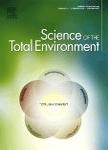版权所有:内蒙古大学图书馆 技术提供:维普资讯• 智图
内蒙古自治区呼和浩特市赛罕区大学西街235号 邮编: 010021

作者机构:Hebei Key Laboratory of Public Health Safety Hebei University Baoding071002 China School of Public Health Hebei University Baoding071002 China State Key Laboratory of Biochemical Engineering Key Laboratory of Biopharmaceutical Preparation and Delivery Chinese Academy of Sciences Beijing100190 China Institute of Process Engineering Chinese Academy of Sciences Beijing100190 China
出 版 物:《Science of the Total Environment》 (Sci. Total Environ.)
年 卷 期:2025年第982卷
页 面:179640页
核心收录:
学科分类:0710[理学-生物学] 0303[法学-社会学] 0830[工学-环境科学与工程(可授工学、理学、农学学位)] 1004[医学-公共卫生与预防医学(可授医学、理学学位)] 1002[医学-临床医学] 1001[医学-基础医学(可授医学、理学学位)] 08[工学] 0837[工学-安全科学与工程] 071005[理学-微生物学]
基 金:This work was supported by the National Key R&D Program of China ( 2021YFC2102201-01 ) Beijing Natural Science Foundation ( 8242040 ) One Province One School Talent Project ( 521000981124 )
主 题:Risk assessment
摘 要:Inhalation bioaccessibility is critical for accurate health risk assessment of airborne pollutants. This study systematically investigated PM2.5-bound polycyclic aromatic hydrocarbons (PAHs) and brominated flame retardants (BFRs) during haze episodes and normal periods in northern China, focusing on their concentration profiles, bioaccessibility (via artificial lysosomal fluid [ALF] and Gamble s solution [GS] models), and inhalation risks. Results revealed haze-driven elevations in PAHs (4.93 vs. 3.14 ng/m3, 1.57 times) and BFRs (1566 vs. 926 pg/m3, 1.69 times). Despite elevated concentrations, bioaccessibility showed no significant haze-normal differences for PAHs (22.3–95.3 % vs. 25.9–83.9 %, p 0.05) or BFRs (12.7–56.6 % vs. 14.9–74.1 %, p 0.05). Total concentration-based incremental lifetime carcinogenic risks (ILCRinh) overestimated hazards by 5.71–20.6 times compared to bioaccessibility-adjusted risks (9.57 × 10−9–1.28 × 10−8 for haze;5.33 × 10−9–6.27 × 10−9 for normal), though all values remained below safety thresholds (ILCRinh −6). Our results emphasize the importance of inhalation bioaccessibility in risk assessment for PM2.5-bound PAHs and BFRs. © 2025 Elsevier B.V.